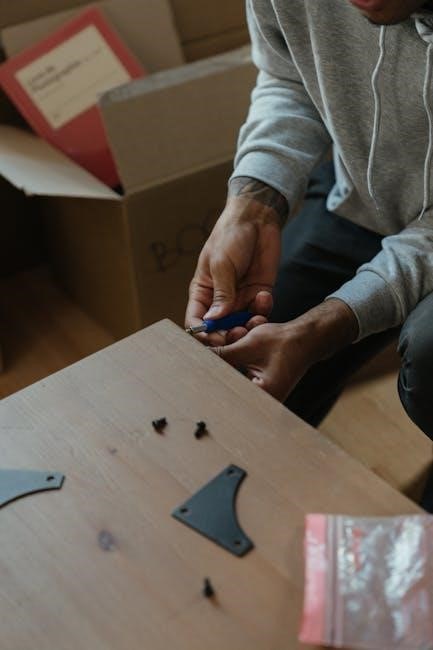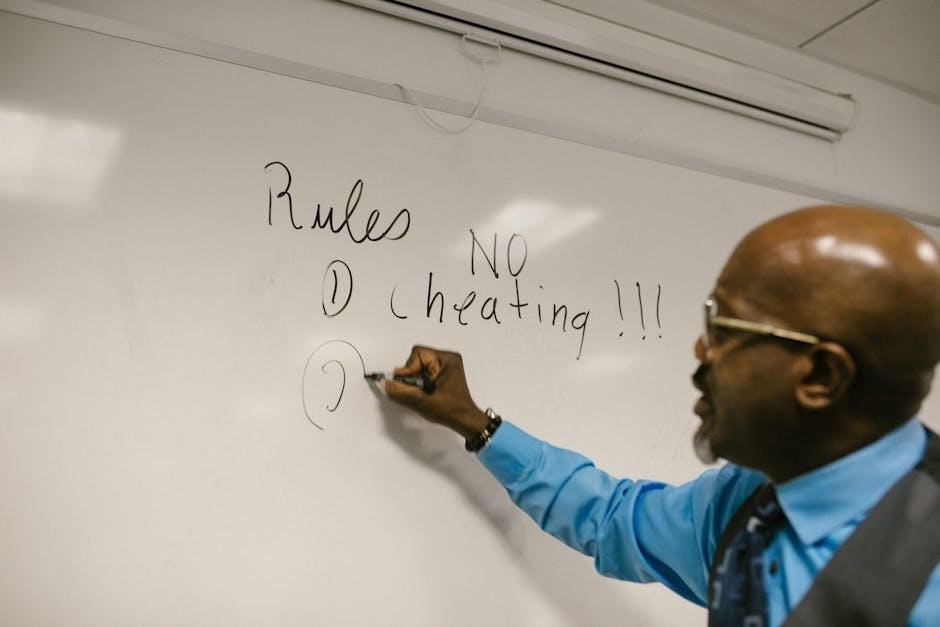Bifen IT Instructions: A Comprehensive Guide
Bifen IT, containing 7.9% bifenthrin, offers broad-spectrum pest control. This guide details its proper use, ensuring effective application and adherence to safety regulations.

What is Bifen IT?

Bifen IT is a highly effective insecticide formulated with 7.9% bifenthrin, a pyrethroid insecticide known for its potent and long-lasting control of a wide range of pests. It’s a versatile product designed for both indoor and outdoor applications, making it a popular choice for residential and commercial pest management.
This insecticide boasts an odorless and non-staining formula, providing discreet pest control without leaving behind noticeable residues. Bifen IT excels in delivering excellent control over more than 75 insect pests, offering a comprehensive solution for various infestations. Its residual activity ensures prolonged protection, reducing the frequency of re-applications.
As a general-use insecticide, Bifen IT is suitable for treating numerous areas, from homes and gardens to commercial buildings. However, responsible and label-compliant application is crucial for maximizing its effectiveness and minimizing potential risks.
Active Ingredient: Bifenthrin
Bifenthrin is the active ingredient in Bifen IT, belonging to the pyrethroid family of insecticides. Pyrethroids are synthetic compounds based on naturally occurring pyrethrins found in chrysanthemum flowers, but are more stable and longer-lasting. It works by disrupting the nervous system of insects, leading to paralysis and ultimately, death.
This potent chemical effectively controls a broad spectrum of pests, including ants, termites, spiders, cockroaches, and various other crawling and flying insects. The 7.9% concentration in Bifen IT provides a robust level of pest control, ensuring effective elimination of infestations.
Bifenthrin exhibits residual activity, meaning it remains effective on treated surfaces for an extended period, providing continued protection against re-infestation. Understanding its mode of action is key to utilizing Bifen IT responsibly and achieving optimal results, always following label directions.
Target Pests Controlled by Bifen IT
Bifen IT boasts impressive control over a wide array of insect pests, exceeding 75 species. Common targets include ants, effectively eliminating colonies and preventing future incursions. It’s also highly effective against termites, providing a crucial barrier against structural damage.

Crawling insects like cockroaches, silverfish, and spiders are readily controlled with Bifen IT applications. Flying insects, such as flies, mosquitoes, and certain types of wasps, are also susceptible to its effects. The broad-spectrum nature of this insecticide makes it a versatile solution for diverse pest problems.
Furthermore, Bifen IT can manage pests like earwigs, crickets, and millipedes. Always consult the product label for a complete and up-to-date list of controlled pests, as efficacy can vary depending on species and application method. Proper identification of the target pest is crucial for successful treatment.
Application Areas: Indoor Use

Bifen IT is approved for indoor use in a variety of residential and commercial settings, targeting common household pests. Key application areas include kitchens, bathrooms, and basements – locations prone to insect activity. Focus treatment on areas where pests are frequently observed or may harbor, such as cracks and crevices.
Effective indoor applications involve treating along baseboards, around pipes, and within wall voids. Pay close attention to areas near doors and windows, potential entry points for pests. Bifen IT can be used in attics and crawl spaces, but ensure proper ventilation during and after application.
Avoid direct application to food preparation surfaces. Always follow label instructions regarding surface treatment and allow treated areas to dry completely before allowing people or pets to re-enter. Remember, responsible indoor use ensures both pest control and occupant safety.
Application Areas: Outdoor Use
Bifen IT demonstrates excellent efficacy for outdoor pest control around residential and commercial structures. Permitted application sites include lawns, ornamentals, and foundation perimeters, creating a protective barrier against invading insects. Target areas such as around doors, windows, and utility openings where pests may enter.
For optimal results, apply Bifen IT to areas where pests are actively foraging or nesting. This includes treating around shrubs, flowerbeds, and ground cover. Consider perimeter treatments to prevent insects from approaching the structure. Ensure thorough coverage, but avoid application directly into sewers or drainages.
Prior to application, remove any items that might be contaminated, like pet bowls or children’s toys. Always adhere to label directions regarding application rates and restrictions, especially near edible plants. Responsible outdoor use maximizes pest control while minimizing environmental impact.
Dilution Rates and Mixing Instructions
Bifen IT requires careful dilution for effective pest control and to avoid potential harm. Always consult the product label for specific rates, as they vary depending on the target pest and application area. A common dilution involves mixing Bifen IT with water; for example, 127 ounces of water with a specified amount of concentrate.
To prepare the solution, add the appropriate amount of Bifen IT concentrate to the water in a clean spray tank, ensuring thorough mixing. It’s crucial to add the concentrate to the water, not the other way around, to prevent splashing and ensure proper emulsification. Agitate the mixture continuously during mixing and application.
Accurate measurement is vital. Use calibrated measuring devices to ensure the correct dilution rate. Never exceed the maximum recommended concentration. Properly diluted Bifen IT maximizes efficacy while minimizing risks. Always follow label instructions precisely.
Calculating the Correct Dilution
Determining the correct Bifen IT dilution is paramount for both effectiveness and safety. The label provides dilution rates based on the target pest and application area – always prioritize these instructions. Calculations often involve ounces of concentrate per gallon of water, or teaspoons per gallon.
For instance, if the label calls for 0.5 ounces of Bifen IT per gallon of water, carefully measure 0.5 ounces of concentrate and add it to a gallon of water. To calculate dilutions for different volumes, use simple proportions. If you need 2 gallons, multiply the concentrate amount by two (1 ounce in this case).
Double-check your calculations and measurements. Incorrect dilutions can render the product ineffective or cause unwanted residue. Utilize online dilution calculators or conversion charts if needed. Accurate dilution ensures optimal pest control and minimizes environmental impact. Always err on the side of caution and follow label guidelines.
Application Techniques
Effective Bifen IT application hinges on selecting the appropriate technique for the situation. Two primary methods are crack and crevice treatment and broadcast spraying. Crack and crevice treatment focuses on applying the insecticide into narrow spaces where pests harbor, like around pipes, under appliances, and along baseboards. Use a precision applicator tip for targeted delivery.
Broadcast spraying involves applying a uniform layer of insecticide over a larger area. This is suitable for outdoor applications on lawns or around building perimeters. Ensure even coverage, avoiding runoff; Always consult the product label for specific instructions regarding spray volume and nozzle type.
Regardless of the technique, maintain consistent pressure and walking speed during application. Avoid spraying directly into ventilation systems. Post-treatment, allow the spray to dry completely before allowing people or pets into the treated area. Proper technique maximizes efficacy and minimizes non-target exposure.
Crack and Crevice Treatment
Bifen IT excels in crack and crevice treatment, targeting hidden pest habitats. This method involves applying the insecticide directly into voids where insects live and travel – think around pipes, behind appliances, within wall voids, and along baseboards. Utilize a precision tip applicator, extending the nozzle into these spaces during application.
Thoroughness is key. Inspect areas carefully and treat all potential entry points. Apply a short burst of spray, aiming to coat the interior surfaces of the crack or crevice. Avoid over-application, as this isn’t necessary for effectiveness. The goal is to create a residual barrier that eliminates pests as they emerge.
For optimal results, ensure the area is dry before treatment. This allows the insecticide to adhere properly. Following treatment, monitor the area for continued pest activity and reapply if necessary, always adhering to label instructions.
Broadcast Spraying
Bifen IT can be applied via broadcast spraying for larger outdoor areas, but careful consideration is crucial. This method involves applying a uniform, low-pressure spray over the entire treatment area, typically lawns, perimeters of buildings, or around ornamental plants. Always consult the product label for specific dilution rates and application volumes.
Ensure even coverage, avoiding excessive runoff. Calibrate your sprayer to deliver the correct amount of product per square foot. Pay attention to wind conditions; avoid spraying on windy days to prevent drift onto non-target areas. Thoroughly wet the vegetation, but avoid saturating the soil.
Post-application, allow the treated area to dry completely before allowing people or pets to re-enter. Broadcast spraying provides a broad-spectrum control, but may require more product than targeted treatments. Always prioritize label instructions for safe and effective use.
Safety Precautions and Personal Protective Equipment (PPE)
Bifen IT is a powerful insecticide, demanding strict adherence to safety precautions. Always read and understand the entire label before handling or applying this product. When mixing, loading, or applying, wear appropriate Personal Protective Equipment (PPE) to minimize exposure.
Essential PPE includes chemical-resistant gloves (such as nitrile or neoprene), long-sleeved shirts, long pants, and waterproof footwear. For applications that may create dust or spray mist, a respirator is recommended. Eye protection, like safety glasses or goggles, is also crucial to prevent irritation.
Avoid contact with skin, eyes, and clothing. Do not eat, drink, or smoke while handling the product. Wash thoroughly with soap and water after handling and before eating, drinking, or smoking. Remove contaminated clothing immediately and wash before reuse. Store PPE separately from pesticides.
First Aid Measures
In case of exposure to Bifen IT, immediate first aid is crucial. If swallowed, immediately call a poison control center or doctor. Do NOT induce vomiting unless directed to do so by a medical professional. If inhaled, move the person to fresh air. If breathing is difficult, administer oxygen and seek medical attention.
If on skin, wash thoroughly with soap and water. Remove contaminated clothing and shoes. If in eyes, flush immediately with plenty of water for 15-20 minutes, lifting upper and lower eyelids occasionally. Seek medical attention if irritation persists.

Have the product container or label with you when calling a poison control center or doctor, or when seeking medical advice. Note: Symptoms may be delayed. It’s always best to err on the side of caution and consult a medical professional after any significant exposure.
Storage and Handling Instructions
Bifen IT must be stored securely in its original container, tightly closed, in a cool, dry, and well-ventilated area. Keep out of reach of children and animals. Do not store near food, feed, or water sources. Improper storage is contrary to label instructions and can compromise product effectiveness.
When handling Bifen IT, always wear appropriate personal protective equipment (PPE) as specified on the label. Avoid contact with skin, eyes, and clothing. Do not eat, drink, or smoke while using this product. Wash hands thoroughly with soap and water after handling.
Avoid contamination of food or feed. Do not reuse empty containers. Follow manufacturer’s instructions for cleaning and maintaining PPE. Securely store the product to prevent accidental spills or leaks, and ensure proper disposal of any spilled material.
Environmental Hazards
Bifen IT is highly toxic to aquatic organisms, including fish and invertebrates. Extreme care must be taken to prevent contamination of water bodies. Do not apply directly to water, or to areas where surface water is present or may drain.
Runoff from treated areas can be hazardous to aquatic environments. Avoid application when rainfall is forecast to occur, as this can lead to runoff. Consider using drift reduction technologies during application to minimize off-target movement.
This product can pose a risk to beneficial insects, such as bees. Minimize exposure of Bifen IT to flowering plants during application. Dispose of waste materials responsibly, avoiding contamination of soil and water sources. Follow all label instructions to protect the environment.
Disposal Instructions
Pesticide, spray mixture, or rinse water that cannot be utilized according to label directions must be disposed of properly. It is a violation of Federal law to dispose of this product in a manner inconsistent with its labeling.
Pesticide Disposal Guidelines: Contact your state pesticide or environmental control agency for guidance on acceptable disposal methods. Options may include authorized waste disposal facilities or chemical waste collection programs.
Container Disposal: Triple rinse the container (or equivalent) promptly after emptying. Then, offer it for recycling if available, or puncture and dispose of it in a sanitary landfill, or by other procedures approved by state and local authorities. Never reuse the container.
Ensure all disposal practices comply with local, state, and federal regulations. The individual disposing of this product bears the responsibility for determining applicable regulations.
Pesticide Disposal Guidelines
When disposing of unused Bifen IT pesticide, spray mixture, or rinse water, strict adherence to guidelines is crucial. Do not simply discard it; improper disposal poses environmental risks and violates Federal law. Always prioritize responsible handling and disposal practices.
Your primary resource for specific disposal instructions is your state’s pesticide or environmental control agency. They can provide details on authorized waste disposal facilities and chemical waste collection programs operating within your region. Contact them directly for the most current and accurate information.
These agencies will outline acceptable methods, ensuring compliance with local and national regulations. Following their guidance protects both the environment and public health. Remember, proper disposal is a legal obligation and a responsible practice.
Container Disposal
Proper disposal of the Bifen IT container is as important as the pesticide itself. Do not reuse this container for any purpose, including storing other chemicals or materials. This prevents accidental contamination and ensures safety.
Triple rinse the container promptly after emptying. Fill it one-quarter full with water and shake vigorously for at least 30 seconds. Repeat this rinsing process three times, adding the rinse water to the spray tank each time. This minimizes residual pesticide remaining in the container.

Once thoroughly rinsed, the container can be offered for recycling if recycling facilities accept rinsed pesticide containers in your area. Otherwise, dispose of it in accordance with state and local regulations. Contact your state pesticide or environmental control agency for specific guidance on acceptable disposal methods.
Precautionary Statements
Bifen IT is a powerful insecticide and requires careful handling. It is a violation of Federal Law to use this product in a manner inconsistent with its labeling. Always read the entire label before use and follow all instructions meticulously.
Avoid contact with skin, eyes, or clothing. Wear appropriate Personal Protective Equipment (PPE) during application, as detailed in the safety precautions section. Keep children and pets away from treated areas until the spray has dried completely.
Do not contaminate water, food, or feed by storage or disposal. Avoid application directly into sewers or drains. Use only in well-ventilated areas. If irritation occurs, seek medical attention immediately. Store in a cool, dry place, inaccessible to children and animals.
Resistance Management
To minimize the development of insecticide resistance in target pests, implement a robust resistance management strategy when using Bifen IT. Avoid consecutive applications of bifenthrin or other insecticides with the same mode of action. Rotate with products containing different active ingredients.

Employ integrated pest management (IPM) practices, including cultural controls, biological control agents, and sanitation, to reduce reliance on chemical insecticides. Monitor pest populations regularly to detect any signs of resistance development.
Consider tank-mixing Bifen IT with other insecticides possessing different modes of action, where appropriate and permitted by the label. This can broaden the spectrum of control and delay resistance. Always consult the product labels for compatibility and application instructions. Proper rotation and IPM are crucial for long-term effectiveness.
Label Compliance and Federal Law
It is a violation of Federal Law to use this product in a manner inconsistent with its labeling. Thoroughly read and understand the entire Bifen IT product label before application, including all precautionary statements, directions for use, and restrictions.
The label is a legally binding document; adherence is mandatory. State pesticide regulations may further restrict the use of this product. Always consult your State Pesticide or Environmental Control Agency for specific requirements.
Users are responsible for being aware of and complying with all applicable federal, state, and local laws and regulations regarding pesticide use. Misuse can result in fines, penalties, or other enforcement actions. Proper application techniques and adherence to dosage rates are essential for legal and effective pest control.

Irrigation Before Application
Prior to applying Bifen IT, assess the soil moisture level in outdoor application areas. If the soil is dry or not adequately moist, irrigation is crucial before treatment. This ensures optimal product penetration and effectiveness, allowing the insecticide to reach targeted pests residing in the soil.
Alternatively, employ a high-volume application method if irrigation isn’t feasible. This involves using a larger quantity of water with the Bifen IT mixture to adequately saturate the soil. Proper soil moisture facilitates better distribution and reduces the risk of runoff.
Failure to adequately hydrate the soil can diminish the product’s efficacy and potentially lead to re-treatment, increasing environmental impact. Always follow label instructions regarding irrigation practices for best results.
Cleaning and Maintaining PPE

Proper cleaning and maintenance of your Personal Protective Equipment (PPE) are essential after each Bifen IT application to ensure its continued effectiveness and your safety. Always consult the manufacturer’s instructions specific to your PPE for detailed cleaning procedures.
Generally, washable PPE, such as gloves and coveralls, should be laundered separately from other clothing. Avoid using harsh detergents or bleach, as these can degrade the protective materials. Inspect PPE for any signs of damage – tears, punctures, or chemical breakdown – and replace damaged items immediately.
Non-washable PPE, like respirators, require specific cleaning protocols outlined by the manufacturer. Proper storage of clean PPE is also vital; keep it in a cool, dry place away from direct sunlight and potential contaminants. Following these guidelines extends the lifespan of your PPE and safeguards your health.

Leave a Reply
You must be logged in to post a comment.